
WOOD STOCK
Artek’s Subtle Makeover of "Stool 60"
by Julie KleinThe making of Stool 60, designed in 1933 by Finnish architect Alvar Aalto. For the stool’s 90th birthday, Artek is spotlighting its critical materiality: Finnish wood.
When, 90 years ago, Alvar Aalto launched Stool 60 in solid birch, it came as quite a contrast to the industrial aesthetic of chromed steel that had marked the pieces of many of his European contemporaries in the late 1920s — Le Corbusier, Ludwig Mies van der Rohe, Eileen Gray, and Marcel Breuer, among them. Born in 1898 in the forests of rural Finland, Aalto felt the need to create something closer to his roots. “He was very inspired by Thonet,” says Simone Farresin, referring to the firm that pioneered bent-beechwood furniture in 19th-century Austria-Hungary. “Aalto was years ahead of his time in terms of working with local supply chains. Instead of importing beechwood from central Europe, he developed a new technique that allowed him to bend native Finnish birch to produce the famous L-shaped legs.”
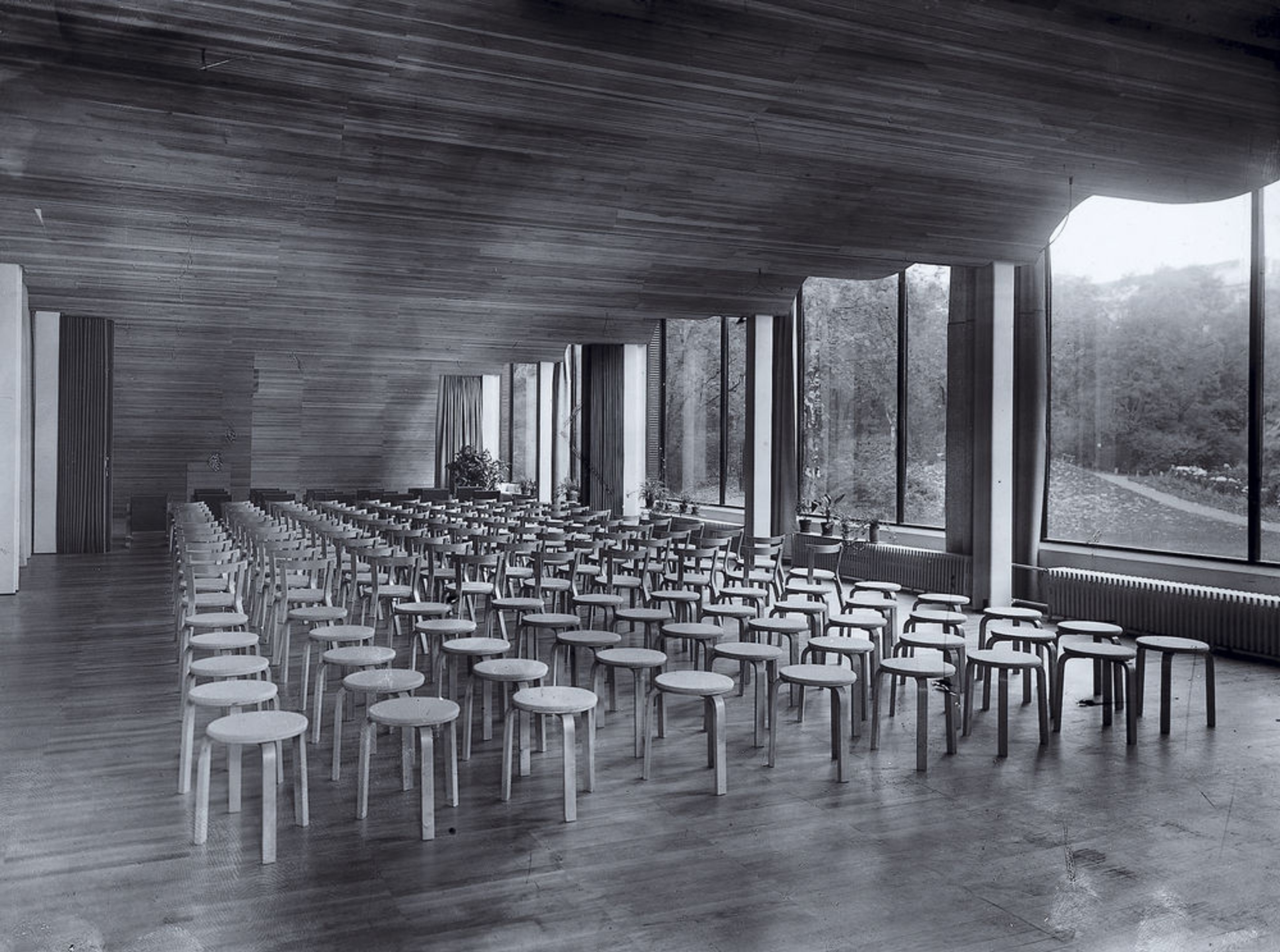
A group of Stool 60, with its characteristic three legs, photographed in the 1930s in the library's auditorium in Vyborg, Russia. The structure was built between 1927–35, when the city was known as Viipuri and under Finnish sovereignty.
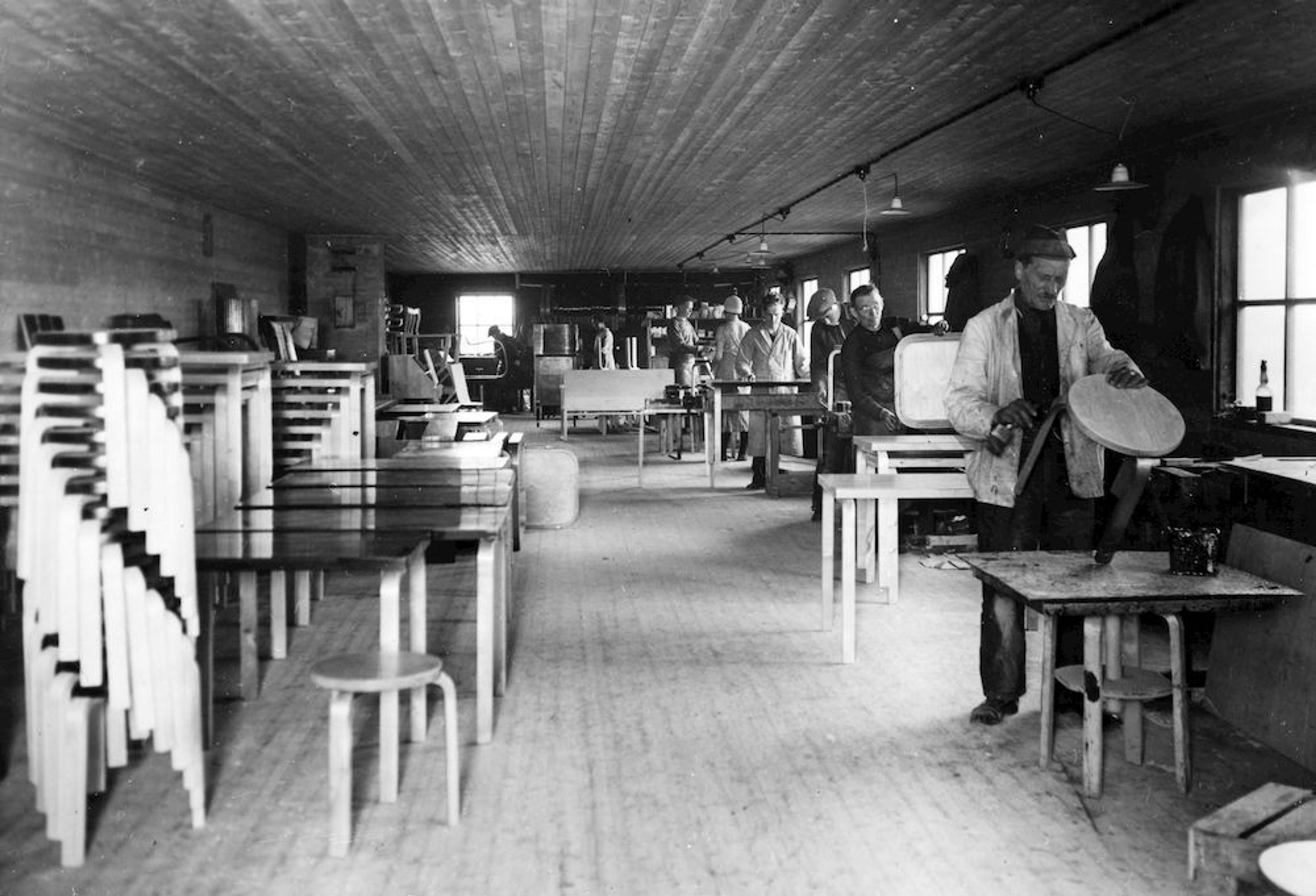
A historic view of the Artek factory in Turku, Finland, where Alvar Aalto’s bentwood designs have been manufactured since the 1920s and where Stool 60 is still produced to this day.
Farresin is one half of Formafantasma, the Italian design duo he founded with his partner Andrea Trimarchi. The two are deeply invested in researching materials and the environmental impact of design. For the past two years they have been investigating the Finnish forests that supply Artek, the furniture company Aalto co-founded in 1935, which still produces Stool 60 to this day (you can read more about Aalto and the history of Artek in Phaidon’s new book Aino + Alvar Aalto: A Life Together). “I’d seen their show about the timber industry at the Serpentine,” recalls Artek’s managing director Marianne Goebl, “and thought it would be interesting to get them involved in Artek since the company is so intrinsically linked to the forest.”
The research program resulted in a 2022 exhibition — Cambio: On Finnish Forestry, at Designmuseo Helsinki — and a special edition of Stool 60. “We had a choice: either work on a new product or apply all of Formafantasma’s findings about the Finnish forest to the product we sell at the highest volume,” Goebl explains.


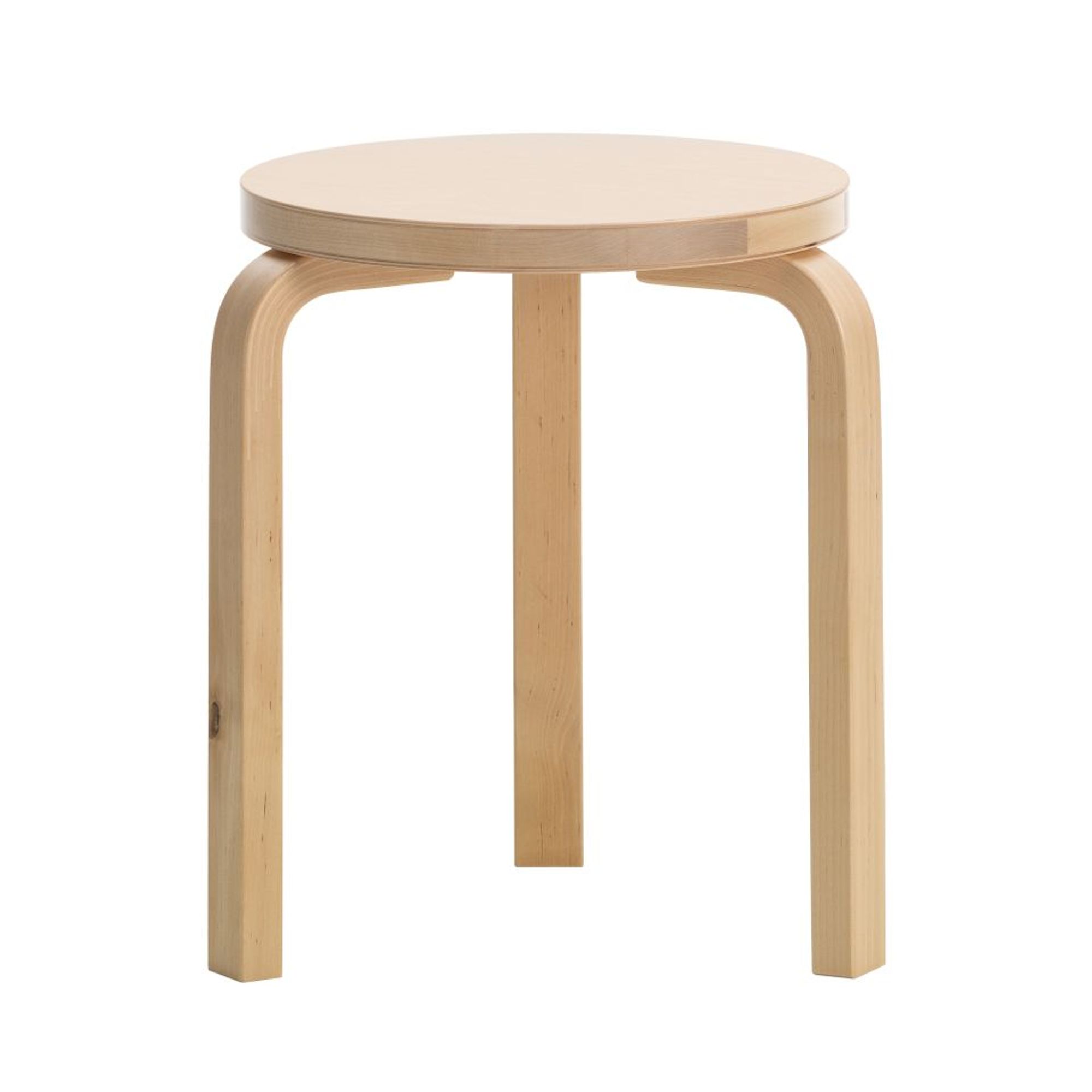
Subtle variations in wood grain make up Formafantasma’s Villi version of the stool.
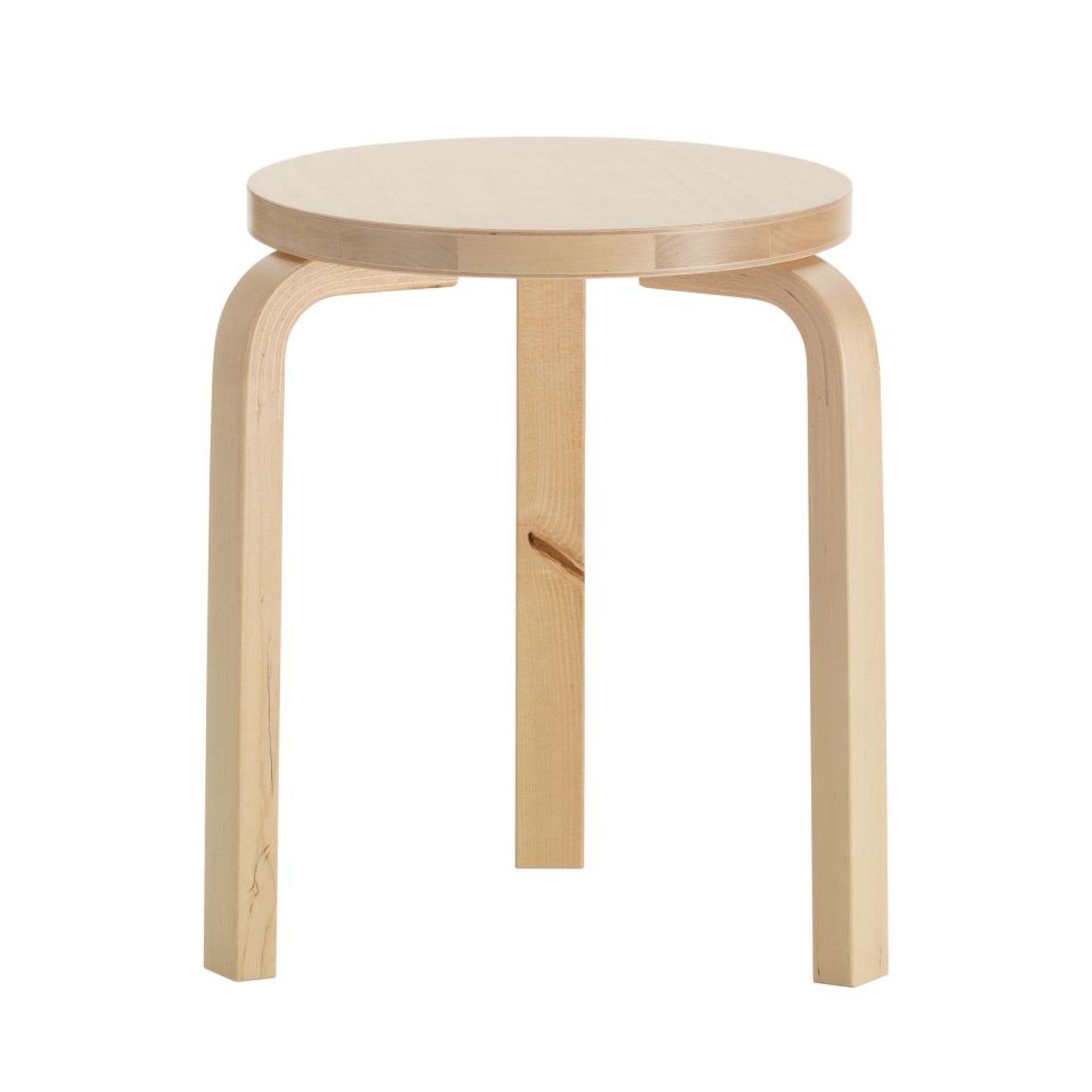

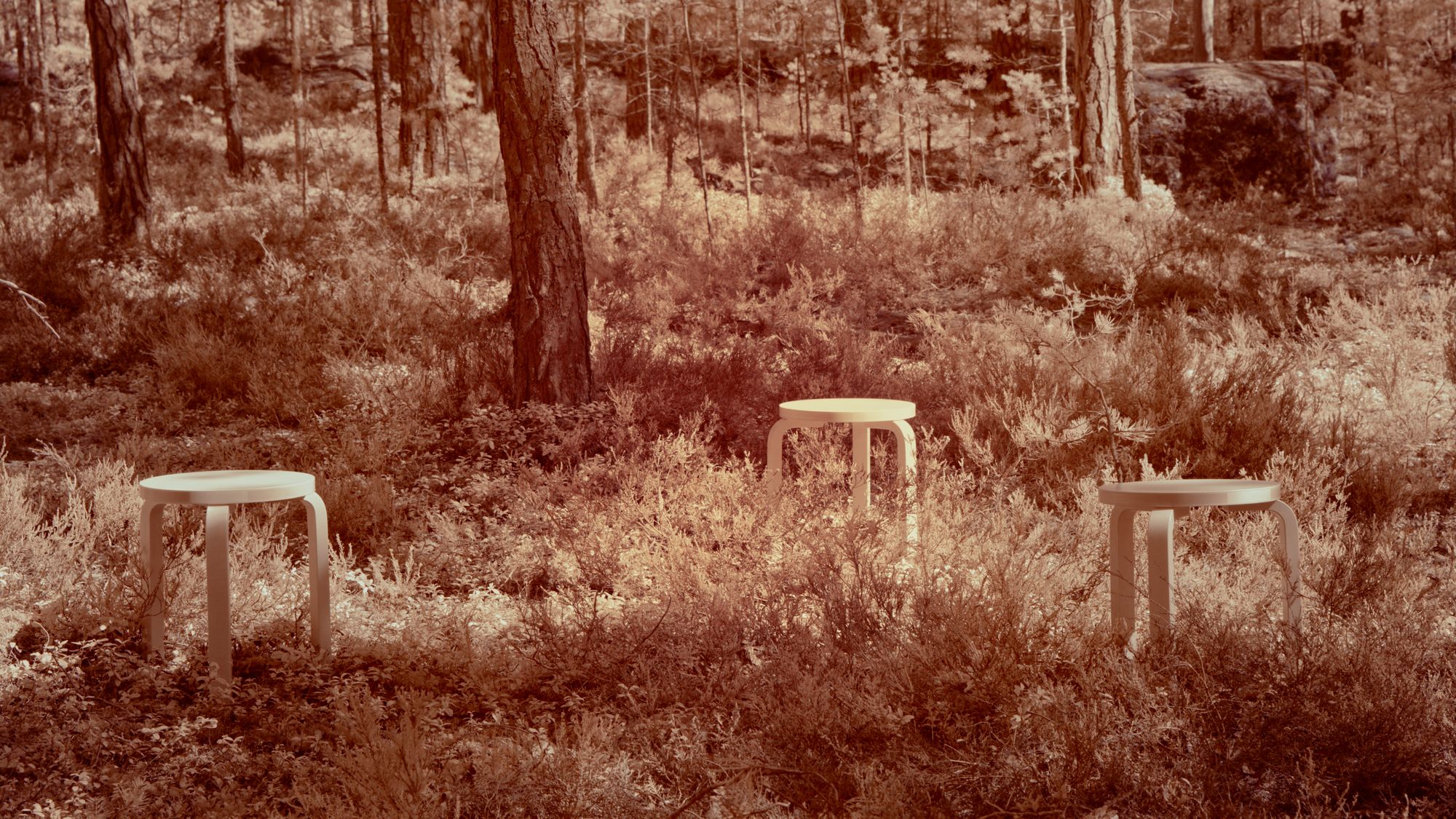
Image from Cambio: On Finnish Forestry, a commission by Artek with Formafantasma and show at Designmuseo Helsinki in 2022. Photo by Jussi Hellsten for Artek

Image from Cambio: On Finnish Forestry, a commission by Artek with Formafantasma and show at Designmuseo Helsinki in 2022. Photo by Jussi Hellsten for Artek
Stool 60 already ticked many sustainability boxes thanks to its renewably-sourced material, use of offcuts, and easy flat-packing, but Formafantasma’s special edition takes it one step further. For their Villi — Finnish for “wild” — variant of Stool 60, the pair used birch that bears knots, stains, and the marks of insects: as well as employing timber that would usually be rejected, Villi highlights the variations that occur in birch forests as a result of climate change and the expansion of human habitats. Two additional versions were also released this year: Stool 60’s Kontrasti version uses darker veneer tones to highlight the bending incisions, and the Loimu variant is made using a unique flame-patterned birch. By updating Stool 60’s story for the 21st century, Villi will run as a permanent and unlimited edition in Artek’s permanent collection.

Detail of Stool 60’s bent L-shaped leg, patented in 1933. The leg is made from solid wood and veneer sheets. Cut-offs from leg production are used for the seat top.